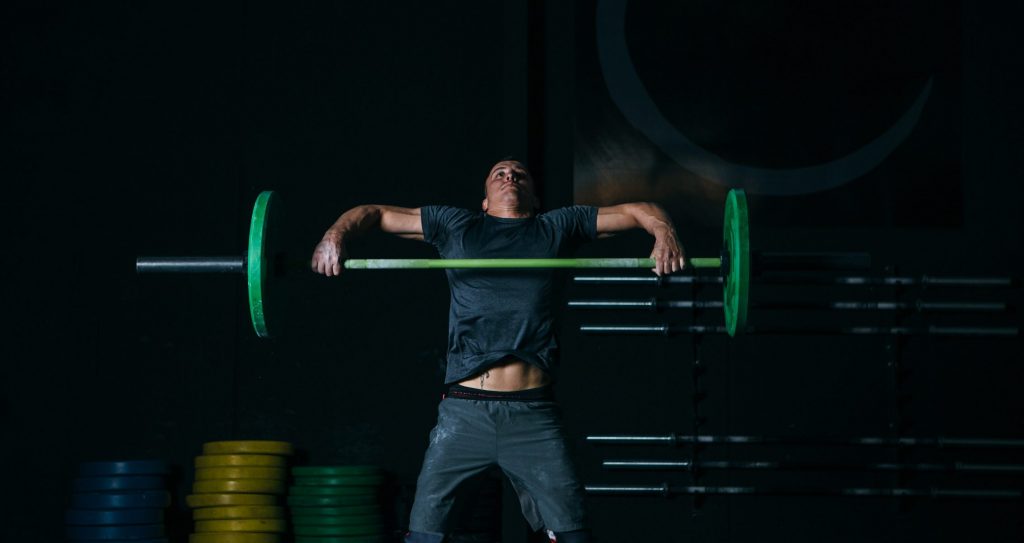The snatch grip builds monster forearms.
Training your body is not a one-way street; there are many ways to reach your goals. Incorporating diverse exercises and modifying techniques can effectively target specific body parts. For instance, the snatch grip allows for a grip variation in exercises like the deadlift to improve grip strength and other benefits.
As an avid lifter, you may already know the benefits of alternating your grip during exercises. For example, this study shows how increasing your grip width can improve the activation of your delts and traps during the upright row (1). Using a snatch grip helps you build thicker forearms and is a great way to train for the snatch, an Olympic weightlifting movement.
But how does this grip build thicker forearms? This exercise guide covers that and explains other benefits of using this grip for bodybuilders and other athletes. You’ll also find tips on the proper form and alternative exercises to use this grip.
Techniques and Muscles Worked
Using this grip for exercises like deadlift increases your range of motion, leading to muscle hypertrophy. It also focuses more on your upper back muscles, like the lats, traps, levator scapulae, and rhomboids. Your posterior delts and forearm flexors are strengthened too.
However, using the snatch grip incorrectly could lead to injuries. So it’s important to learn the proper form and start slowly to get comfortable using this grip. Below is a step-by-step guide on how to use this grip when training.
- Stand fully erect and grab an empty barbell.
- Hinge at your hips and hold the barbell in your hip crease.
- Put your hands to the side and raise your elbows to shoulder level.
- With your elbows locked, grip your barbell, release it from your hips, and stand upright.
- Your barbell should be resting against your hips and above your groin with your arms stretched.
- This is your snatch grip.
Note: You’ll need a hook or double overhand grip position to do the snatch grip. The width makes using a mixed grip hand position virtually impossible when doing the snatch grip.
Benefits of the Snatch Grip and How It Builds Thicker Forearms
The snatch grip brings a variety and many advantages to your exercise routine. Below are the different benefits.
Builds Thicker Forearms
The width makes it harder to hold onto the bar when using a snatch grip. As a result, your forearms work harder to grab the barbell. Using the snatch grip for overhead carries or a deadlift will lead to greater forearm activation, muscle growth, and thicker forearms.
Carryovers to Olympic Snatch
It’s an important part of the Olympic lift snatch. Practicing your snatch grip will help to improve your Olympic lifting and powerlifting strength.
Better Range of Motion
Using the snatch grip for routines like deadlift increases your range of motion. You’ll have to sink your legs lower than normal to set up your deadlift. A greater range of motion leads to more muscle time under tension and better muscle growth.
Add Variety
Repeating certain routines to strengthen and build particular muscle groups is sometimes important to improve your physique. However, doing the same exercises continually can lead to boredom and a strength plateau. Research shows during resistance training, you should vary your workout to avoid a plateau (2). A snatch grip lets you bring something new into your exercise to test your muscles and strength.
Snatch Grip Routines
This grip alternative can make a big difference in the feel and impact of your regular barbell exercises. This change can make grasping a barbell much harder to improve grip strength. Below are some exercises that you can try using the snatch grip.
Snatch Grip Deadlift
The snatch grip deadlift is a deadlift with a much wider grip, the snatch grip. It still builds the muscles of your hamstrings, glutes, and back. But it increases the difficulty of the lift and especially engages your forearm muscles to pull the weight. However, it’s more comfortable on your lower back despite increased lifting difficulty.
Snatch Grip Romanian Deadlift
This exercises places a greater emphasis on loading your glutes and hamstrings. It involves lifting your barbell from a standing position. Keeping the bar close to your legs is best when doing this exercise.
Snatch Grip Rack Pull
The snatch grip rack pull is great for building your hamstrings, forearms, upper traps, glutes, erector spinae, and lats. It helps you develop your speed and power and has carryover to exercises like the deadlift since it mimics the hip extensions and pulling of heavy weight from a static position.
Snatch Grip Bent Over Row
This grip variation on the bent over row is great for building your upper back and lats. This exercise also has great carryover to routines like the Olympic snatch and deadlifts. The wider grip on the barbell bent-over row will improve your grip strength and engage more of the outer portions of your back and lat muscles.
FAQs
What are the benefits of the snatch grip?
It helps to build thicker forearms and improves your grip strength. It also adds variety to common exercises like deadlifts and rows. For more details, check the guide above.
What is the difference between the snatch grip deadlift and the regular grip deadlift?
It induces a greater range of motion during your deadlift than the regular narrow grip deadlift. As a result, it also focuses more on your upper back. Some lifters find this wider grip to place less stress on their lower back.
Try the snatch grip the next time you perform deadlifts and bent-over rows, and watch your forearm strength skyrocket. You’ll also notice improvements in the Olympic lift snatches.
Follow us on Instagram, Facebook, and Twitter for more exercise guides!
References
- McAllister, M. J., Schilling, B. K., Hammond, K. G., Weiss, L. W., & Farney, T. M. (2013). Effect of grip width on electromyographic activity during the upright row. Journal of strength and conditioning research, 27(1), 181–187. https://doi.org/10.1519/JSC.0b013e31824f23ad
- Krzysztofik, M., Wilk, M., Wojdała, G., & Gołaś, A. (2019). Maximizing Muscle Hypertrophy: A Systematic Review of Advanced Resistance Training Techniques and Methods. International journal of environmental research and public health, 16(24), 4897. https://doi.org/10.3390/ijerph16244897









